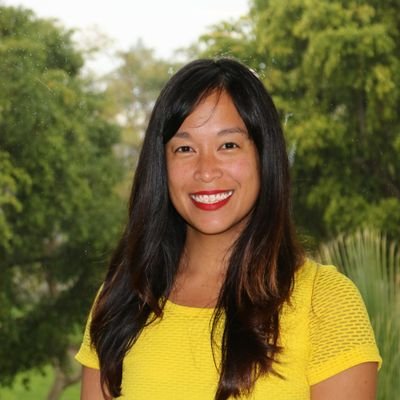Studying chemistry and materials science engineering as an undergraduate, Dr. Elaine Villanueva Bernal thought she would end up working for a company like Lockheed Martin after graduating from the University of California, Los Angeles.
“But I wanted a career that was holistic, one where I could blend my science and STEM background with educational technology,” she says. “Besides, as one of my best friends said, ‘The chemicals don’t talk back to you,’ and I wanted more interaction with people.”
Bernal found herself drawn to education and earned a Master of Arts in Education Technology and Media Leadership and then a Doctorate in Educational Leadership at California State University, Long Beach (CSULB). Bernal has been teaching chemistry at CSULB for 15 years and has served as the coordinator for the College of Natural Sciences and Math, connecting students to industry and working with faculty on curriculum.
For example, the College partners with the National Science Foundation to help Latino students develop experience in the lab, in the classroom, and in industry. “We’re working together with Boeing and other large companies to partner research and academia,” Bernal says. “I’ve always loved science, but I like bringing everybody together at the table to serve students and industry partners.”
Raised in southern California near the Port of Los Angeles, Bernal saw firsthand the impact of air pollution, and that inspired a passion for connecting chemistry to the community to teach students how to combat climate change with science. Today she uses equity-minded pedagogy, digital learning technology, and personal experience to encourage students to explore questions of climate justice.
“I love to inspire curiosity in my students by using chemistry to relate to the world they’re in,” Bernal says. “One thing I always tell my students at the beginning of the semester is that chemistry is literally everywhere. My job is to help you look for it and see it.”
Now Bernal is looking forward to sharing her experience as part of the Every Learner Everywhere Expert Network, powered by ISTE. She is one of a group of seven consultants providing flexible on-demand coaching to higher education faculty and leaders who are working to advance equity and inclusion in blended and online modalities. Her areas of expertise include student engagement strategies, STEM instruction and curriculum, and STEM faculty professional development in higher education and K-12.
Connecting chemistry to community
Bernal teaches a global climate change course that uses chemistry as a foundation to look at rising sea levels, extreme weather, and other issues. But she also teaches CSULB students — where more than 25 percent are Latino and many are first-generation college students — to look at climate change from an equity perspective.
Bernal says, “Here in Long Beach we have a lot of air pollution, and when it comes to climate change, communities of color are most affected.” So courses on climate change create an opportunity to connect science education with personal experience by asking students to consider what the chemistry is behind it, where it comes from, and who is impacted.
And when Bernal points out that she graduated from the same high school in nearby Carson that many of her students went to, “That’s pretty powerful.”
Easily accessible digital learning
As an undergraduate, Bernal felt she wasn’t learning enough from course textbooks, and thinking about online sources of information inspired an early curiosity about educational technology. Now she encourages students to reflect on which tools and learning modes are the best for them.
In her courses, Bernal uses digital learning tools that are “very low bandwidth.” She says, “You don’t need a lot of fancy software to access the assignments and activities I give my students.”
For example, students use an app called Chem 101 that allows them to visualize molecules and complete their homework on their phones. Bernal also recommends PhET, an online simulation tool for math and science. She supplements lessons with videos she creates that demonstrate how chemistry is supposed to work.
“That’s one way I keep equity in mind,” she says, “by using free, easily accessible digital tools.”
Interdisciplinary thinking
Bernal is also active in teaching other faculty to use educational technology for science and engineering.” Using the “train the trainer” approach, Bernal prepares faculty to support their colleagues as they introduce technology supports into their curricula.
As a consultant in the Expert Network, Bernal is looking forward to helping others take creative approaches to interdisciplinary work. “I would love to work with someone in the humanities or political science and come up with ways to teach climate change,” she says.
“Climate change is not just a scientific issue. It’s about people who are affected. This is an opportunity to work with faculty who are interested in how to incorporate scientific or mathematical thinking into their teaching.”
This article is part of a series profiling consultants in the Every Learner Everywhere Expert Network, powered by ISTE. The program offers flexible, on-demand coaching to advance equity and inclusion in blended and online modalities using all aspects of digital learning.
Learn more about the program and schedule a consultation with Dr. Elaine Villanueva Bernal.


